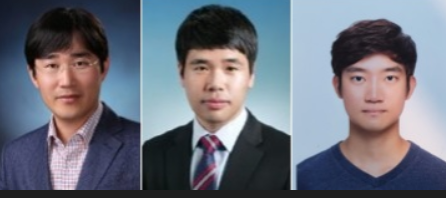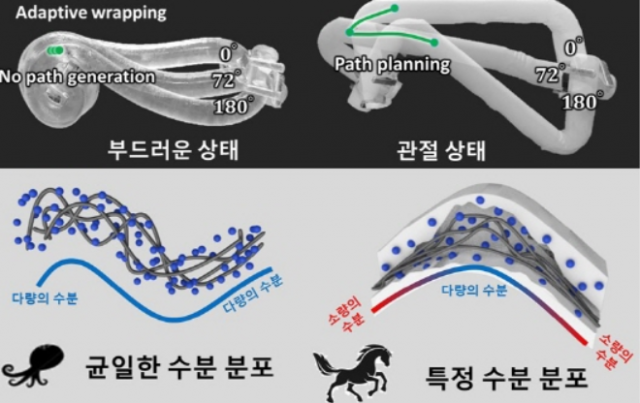Department News
[Seoul Economic Daily] Professor Seung Hwan Ko’s team developed a technology for free transformation between octopus leg and jo
Author
yeunsookim
Date
2021-09-24
Views
478
Development of technology for free transformation between octopus leg and joint structure.
Professor Seung Hwan Ko's team at Seoul National University.
Changes by controlling the distribution of moisture.

Professor Seung Hwan Ko (from the left), Ha In-ho, and Kim Min-woo.
Seoul National University College of Engineering (Dean Byoungho Lee) announced the 15th that Professor Professor Seung Hwan Ko’s team in the Department of Mechanical Engineering has developed a technology that can freely transform the state of a material from the soft state of an octopus to the joint-like shape of a vertebrate.
The body of an organism evolves into a form optimized for the environment in which it lives. Animals such as octopuses have soft bodies to survive in narrow rock crevices, while vertebrates have bodies based a joint structure made of bone and cartilage for efficient force transmission.
The mechanical properties of these living tissues are determined by the amount of water contained. The body of an octopus contains a lot of water as a whole, but the joints of vertebrates are composed of a combination of cartilage with a lot of water and bone with little or no water.

The joint structure allowsly deformation of parts with relatively weak mechanical rigidity (knee, elbow) and has finite kinematic freedom. These characteristics are not suitable for entering and exiting through narrow gaps, but accurate force transmission is possible.
Professor Ko's research team developed a technology that can control the amount of local moisture at a desired moment in a soft overall state by using the phenomenon of taking moisture from the hydrogel when the supersaturated liquid hydrated salt crystallizes. Therefore, this transformation was reversibly possible by spatially controlling the thermodynamic interaction between hydrogel molecules and hydrochloric salt.
This research is expected to bring an innovative leap forward in the field of next-generation soft robots with a technology that can form and remove joint structures at desired locations as needed beyond the existing research that simply converts rigidity.
Source: https://www.sedaily.com/NewsView/22RH43AGN8

